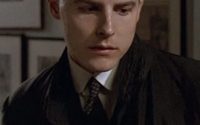You may possibly be on the lookout ahead to seeing the future whole solar eclipse that is taking place on Monday, April 8. But when the instant arrives, are you prepared for how you’ll see it?
Looking straight at the sunshine can severely harm your eyes, and typical sun shades will not present the degree of safety you will need. “Even a small bit of the sun’s mild is adequate to harm your vision,” says Dillon Marcy, the planetarium coordinator/presenter for the Ga Southern Planetarium in Statesboro, Ga. In actuality, eye damage can take place in much less than a moment.
Which is why NASA suggests solar glasses, or solar viewers, that are 100,000 periods darker than frequent sun shades and block practically all noticeable, infrared and ultraviolet light. To guard your eyes, you can get photo voltaic glasses from this list of respected shops compiled by the American Astronomical Culture (AAS). Make certain something you obtain meets the intercontinental basic safety regular recognised as ISO 12312-2.
Far more: This interactive map reveals the ideal time to see the photo voltaic eclipse in your town
But what if you can’t get your arms on this security essential, and you even now want to acquire component in this remarkable celebration? Here’s how to see the eclipse with no photo voltaic eyeglasses.
Contents
The Indirect Viewing Approach
The most typical suggestion from space experts is to check out the eclipse with the pinhole projection process.
“This usually means that daylight tasks by means of a small hole in an item onto a floor outside of, and you appear at the solar graphic on that surface,” says Hunter Miller, the astronomy educator at the Adler Planetarium in Chicago. The fantastic news: You can make this outcome making use of house goods.
You could bring an object that presently has small holes in it — a single popular preference is a kitchen area colander. “Hold it up outdoors during the eclipse so that it casts a shadow on the floor,” suggests Alec Warren, the director of the Frost Planetarium and Science Museum in Miami. “Rather than seeking up at the sun, appear down at the shadow your pinhole ‘camera’ casts, and you will see a projection of the eclipse as a result of the hole on the floor in entrance of you.”
Or, you can Do it yourself your own projector. “Just take away the opening of a cereal box and include half of that opening with aluminum foil,” claims Marcy. “Put a modest hole in the middle of the foil with a sharpened pencil or a thumbtack.”
Extra: You can see the complete solar eclipse from these countrywide parks
When the eclipse starts, look via the other opening of the cereal box and switch away from the sunshine. Then, slowly transfer your head back again until eventually you see the solar projected in the box.
“During the eclipse it will be easy to explain to you are performing it properly, as you will at some point see the solar remaining blotted out,” Marcy suggests.
Here’s a YouTube demonstration:
No cereal packing containers all over? Genuinely, all you need to have are two piece of cardboard.
“Cut a just one-inch gap in the initial piece of cardboard, then tape a piece of foil over the gap,” says Jim Todd, the director of room science schooling at the Oregon Museum of Science and Sector. “Then make a pinhole in the middle of the foil.”
You are going to use the 2nd piece of cardboard as a display. “With the sun powering you, maintain the to start with piece of cardboard as significantly from your cardboard monitor as you can,” Todd claims. “The farther the pinhole is from the display, the even bigger your picture will be.”
A single Important Rule To Adhere to
Do not glimpse right at the sun via the pinhole. And only throughout the incredibly temporary “total” eclipse minute, when the moon fully blocks the vibrant sunlight, is it safe to look without having applying a person of these methods. The next you see the sunlight start out to arise yet again, you have to glance away!
That stated, not having photo voltaic glasses should not halt you from experiencing the eclipse — even if you really don’t have any of these items.
“You can also see pure pinhole projection if the sunshine shines through the leaves of a tree,” claims Miller. “The tiny spaces in involving the leaves act just the same!”

Photographing the Eclipse
“Eclipse images is a challenging course of action,” states Warren. “It’s best practice to seek tips from an astronomer or expert ahead of attempting to photograph an eclipse.”
Just like you simply cannot stare right into the sunlight, you just can’t stare at it through your digicam, both. And slipping your eclipse eyeglasses more than the digital camera lens isn’t advisable, as the concentrated solar rays will damage the filter and inflict significant personal injury to your eyes.
“Instead, telescopes, cameras and optical devices need to be fitted with unique solar security filters that allow for for direct solar viewing and images,” Warren says.
If you’d like to spot a photo voltaic filter in excess of your smartphone digital camera lens, you can invest in a person from any of the stores AAS endorses. Again, it’s critical to make positive they are licensed as safe — specifically when you’re purchasing online. Some of the businesses that make these filters, like VisiSolar and SafeShot, have ISO compliance paperwork offered on their websites.
Observe the Eclipse by means of NASA’s Livestream of the Event
One more way to view the eclipse without glasses? Sit back and choose it in from your residing home couch as NASA livestreams the party on Monday, April 8 from 1-4 p.m. EDT. NASA will attribute room professionals speaking about the eclipse and telescopic views of it from quite a few internet sites alongside the path of totality.


![13 Best Sites to Stream UFC Live Online for Free [2024] 13 Best Sites to Stream UFC Live Online for Free [2024]](https://appearworld.com/wp-content/uploads/2024/11/13-Best-Sites-to-Stream-UFC-Live-Online-for-Free-200x125.jpg)


